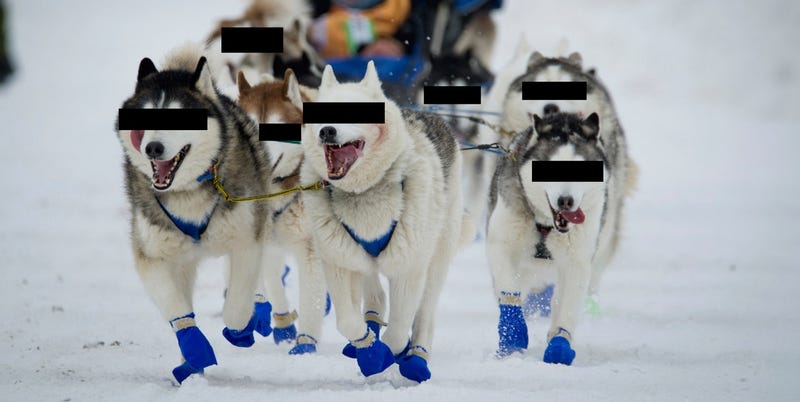A four-time winner of the Iditarod Trail Race has been cleared in a nearly-two-year old case involving four of his dogs testing positive for a banned substance. Except—it’s weird. What’s been overturned is not that Dallas Seavey’s dogs were doped. Oh, those dogs were doped to the gills. What has apparently been determined is that Seavey had nothing to do with it.
Seavey, the youngest ever winner of the race, won the Iditarod in 2012, 2014, 2015, and 2016. But in 2017, the year he finished second to his father Mitch, four of Seavey’s 16-dog team tested positive for Tramadol, an opioid painkiller. The narcotic effect allows athletes (including canine ones) to push their physical limits further than they could otherwise, which is why Tramadol—which isn’t generally banned in human sports—is so popular in cycling.
Advertisement
But the case of Seavey’s four doped dogs was strange from the beginning. The committee initially resisted making public the identity of the team that had failed the test, and even after pressure forced them to name Seavey, they did not disqualify his result nor ask him to return his prize money.
And now, Seavey’s in the clear. From the Anchorage Daily News:
“We met with him multiple times and there was (sufficient) evidence to conclude he didn’t have anything to do with it,” Mike Mills, the president of the Iditarod’s board of directors, said in an interview.
“… There’s no wrongdoing with Dallas that we found. He had no knowledge. It’s a hard situation to untangle, but we’re comfortable that we made the right decision.”
So who drugged the dogs?
“We’re convinced we’re never going to figure that out,” Mills said.
The board of directors, however, did not share any of the evidence they considered when making their ruling.
Advertisement
From the start, Seavey had raised the theory that his team had been sabotaged, presumably by another musher. The levels of the drug were far higher than they needed to be for performance-enhancing purposes, he said, and they were administered at a time Seavey would have known his dogs were about to be tested.
It remains unclear if anyone has raised the possibility, but I’m just going to say it: What if the dogs decided to dope on their own? There, I said it!
Now that Seavey’s been absolved, he may consider returning to the next Iditarod, in March 2019, after skipping last year’s race.
Source: Read Full Article
